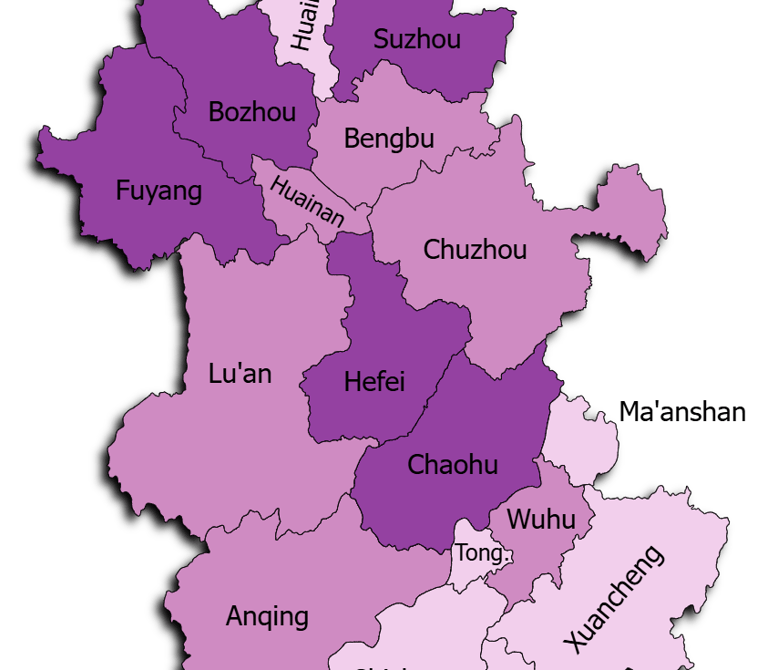Cities in Shandong


Introduction
Shandong is located on China’s east coast, facing the Yellow Sea and bordering Hebei, Jiangsu, Anhui, and Henan. The province combines coastal plains, mountains, and rivers, including part of the Yellow River basin. Shandong is known for its Confucian heritage, strong manufacturing base, and historic role in Chinese culture, philosophy, and education.


Jinan is located in the north of Shandong, surrounded by hills and lakes. The city has a population of around 9 million and lies close to the Yellow River. Known as the “City of Springs,” Jinan has a calm and historical character shaped by water, culture, and ancient scholarship.
Jinan is known for its natural springs, traditional culture, and regional governance. As the provincial capital, it plays an important role in administration, research, and education. The city is home to Shandong University, one of the oldest modern universities in China, and has developed industries related to machinery, pharmaceuticals, and information technology. Historic temples, gardens, and old streets reflect centuries of Buddhist, Confucian, and Taoist influence.
📍 Main places to visit include Baotu Spring Park, Daming Lake, Thousand Buddha Mountain, Shandong Museum, Black Tiger Spring, Qianfo Cliff.
Jinan (济南)
Qingdao (青岛)
Qingdao is located on the southeastern coast of Shandong, along the Yellow Sea. The city has a population of around 11 million and is one of the most well-known coastal urban centers in northern China. Its character blends modern industry with a distinct architectural and maritime identity.
Qingdao is recognized for its economy, trade, and port activity. It is home to one of China’s major maritime hubs and several large companies in electronics, shipping, and household appliances. The city also carries historical influence from its early 20th-century period of foreign presence, reflected in urban design and cultural heritage. Universities, research centers, and marine institutes contribute to its strong academic environment.
📍 Main places to visit include May Fourth Square, Zhanqiao Pier, Laoshan Scenic Area, Badaguan Historic Area, Qingdao Olympic Sailing Center, Xinhao Hill.




Yantai is located on the northern coast of Shandong Peninsula, overlooking the Bohai Sea. The city has a population of around 7 million and is known for its coastal setting and growing industrial base.
Yantai is notable for its manufacturing sector, ocean-related industries, and emerging technological development. It has a long connection to maritime trade and maintains a mix of modern districts and older port areas. Several universities and institutes support the city’s technological and economic development.
📍 Main places to visit include Yantai Hill, Penglai Pavilion, Tashan Scenic Area, Nanshan Park.
Yantai (烟台)
Zibo (淄博)
Zibo is located in north-central Shandong, near Jinan. The city has a population of around 4 million and has historically been associated with early Chinese civilization.
Zibo is recognized for its connection to ancient Qi culture, archaeology, and ceramics. It remains active in manufacturing and chemical industries, with museums and ruins preserving its cultural legacy.
📍 Main places to visit include Qi State Museum, Zhoucun Ancient Town, Linzi Museum.
Weifang (潍坊)
Weifang is located in central Shandong, between coastal and inland regions, with a population of around 10 million. It is well connected to nearby major cities and is known as an administrative and industrial hub.
The city has a strong manufacturing sector, including machinery, electronics, and textiles. Weifang also has historical roots linked to folk traditions and cultural heritage.
📍 Main places to visit include Fuyan Mountain, Shihu Garden, Qingyun Lake.




Linyi (临沂)
Linyi is located in the southern part of Shandong, with hills, rivers, and agricultural plains. The city has a population of around 11 million and serves as an important commercial center in the region.
Linyi is known for its expanding logistics industry, historical sites, and cultural heritage linked to ancient thinkers and classical texts. The city has a growing education sector and modern development areas.
📍 Main places to visit include Yinqueshan Han Bamboo Slips Museum, Yinan Bamboo Sea, Mengshan Scenic Area.
Taian (泰安)
Taian is located in central Shandong at the base of Mount Tai and has a population of around 5 million. The city has a steady and historical character.
Taian is best known for Mount Tai’s cultural and spiritual legacy, which has shaped local identity for millennia. Tourism, education, and light manufacturing are key elements of the local economy.
📍 Main places to visit include Mount Tai, Dai Temple, Taishan Geological Park.




Navigation
Main Menu
nathan.china-sphere.com
© 2025. All rights reserved.